Updated: 30 May 2010

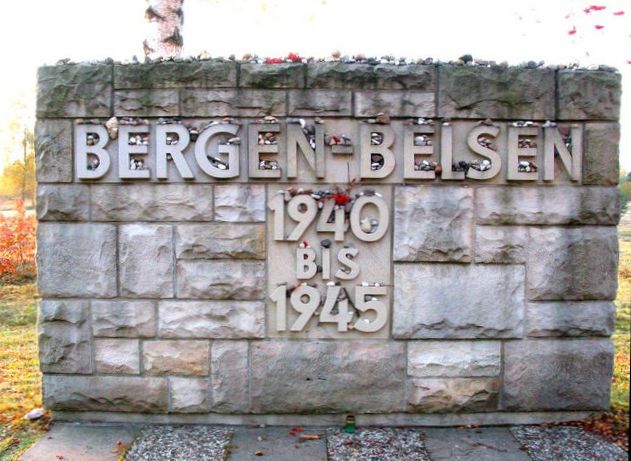
|
A friend of mine, in the USA, told me once that her son was visiting the Holocaust Museum in Washington and that reminded me that I had visited Bergen-Belsen Concentration Camp whilst in the British Army in Germany. My first experience of Belsen was not long after I had arrived in Germany, fresh out of training, having joined my Regiment, the 1st Royal Tank Regiment. We were travelling along a road, in the back of an Army lorry. It was a stinking hot day and the sweat was rolling down our faces. As the lorry followed a bend in the road, it went very cold, the sweat actually froze on my face, and I was shivering with the temperature drop. I asked someone what was wrong and why was I so cold, the reply made me feel even colder - we were passing Belsen Concentration camp! My next experience of the camp was a planned visit with my wife in the mid 1980s and we walked sombrely about the area, noting the mass graves each containing over 1500 souls. Totalling 23000+. A total of 35000 died here. Belsen was not an extermination camp in the sense of the word, we must make that clear, but many "inmates" died from neglect and disease and medical "experiments". The next trip I took there was to show the place to my brother and sister, who were with us on holiday, we were living in Hildesheim then, not far from the Harz Mountains and the East German Border. Here are some images that I took on that day plus some others found on the net in various locations dealing with this period of history. Also below (April 2004) are some 13 images sent to me by a gent in Belgium, probably never before seen outside his family. The main topic I receive emails on is whether or not people were actually gassed there. The image below of the crematorium is at Belsen; as authenticated by the Simon Wiesenthal Centre But I have seen no sign of any gas chambers. The crematorium was for burning bodies not killing them. I have to say that I simply do not know, its apparently unlikely. Some of these images below are of places like Dachau. The inclusion of these is to show a general image as well as showing facts that I only gleaned upon my visit to Belsen. I have not seen the other camps. This is not a history of Belsen, just some bits of information. This is what the Simon Wiesenthal site has to say on Belsen: Bergen-Belsen was a concentration camp established in 1943 originally to hold prisoners to be used in political exchanges. Administered by the SS, it included five sub-camps where some 50,000 Jews, political hostages, and other prisoners died of starvation, disease, brutality and sadistic medical practices. It was liberated by the British in 1945. http://www.scrapbookpages.com/BergenBelsen/BergenBelsen04.html - Were people gassed at Belsen? As an 11
year-old boy held captive at the
Bergen-Belsen
concentration camp during World War II, Moshe Peer was sent to the
gas chamber
at least six times. Each time he survived, watching with horror as many of the
women and children gassed with him collapsed and died. To this day, Peer doesn't
know how he was able to survive. "Maybe children resist better, I don't know,"
he said in an interview last week. Now 60, Peer has spent the last 19 years
writing a first-person account of the horror he witnessed at Bergen Belsen. On
Sunday, he spoke to about 300 young adults at the Petah Tikva Sephardic
Congregation in St. Laurent about his book and his experience as a Holocaust
survivor. |
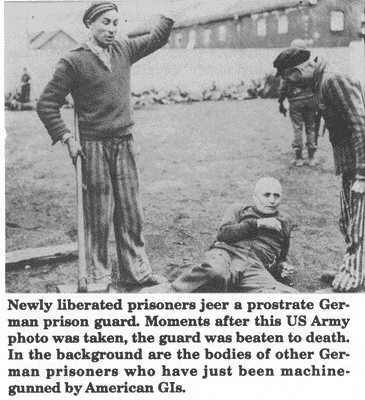 |
|
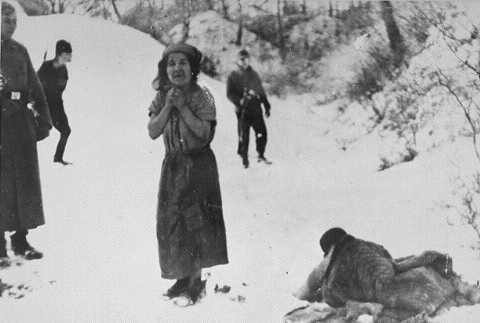 The vicious terrorist in this image was murdered by the soldiers immediately after this was taken |
|
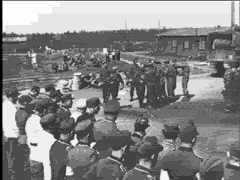 SS Prisoners look on whilst other SS are used to bury corpses in mass graves |
|
|
|
|
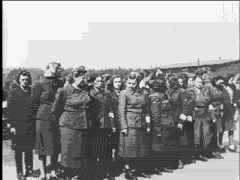 SS Women under arrest awaiting their fate - note the woman (?) far left, she is in the image further above |
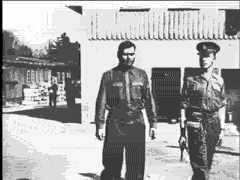 Camp Commandant Bergen Belsen, arrested by a British Soldier |
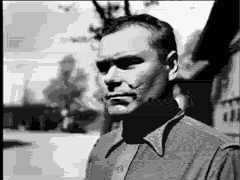 "Kramer" Belsen Camp Commandant - was executed 12 Dec 1945 |
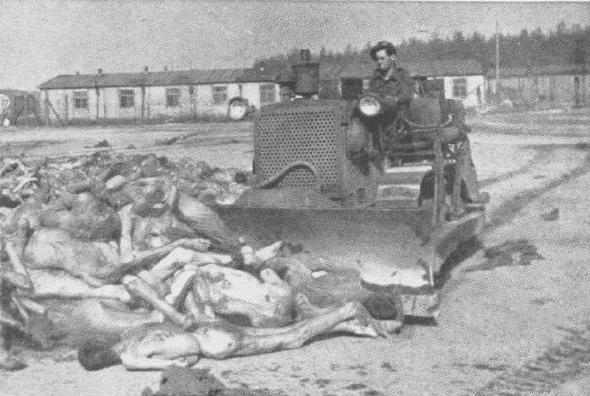 |
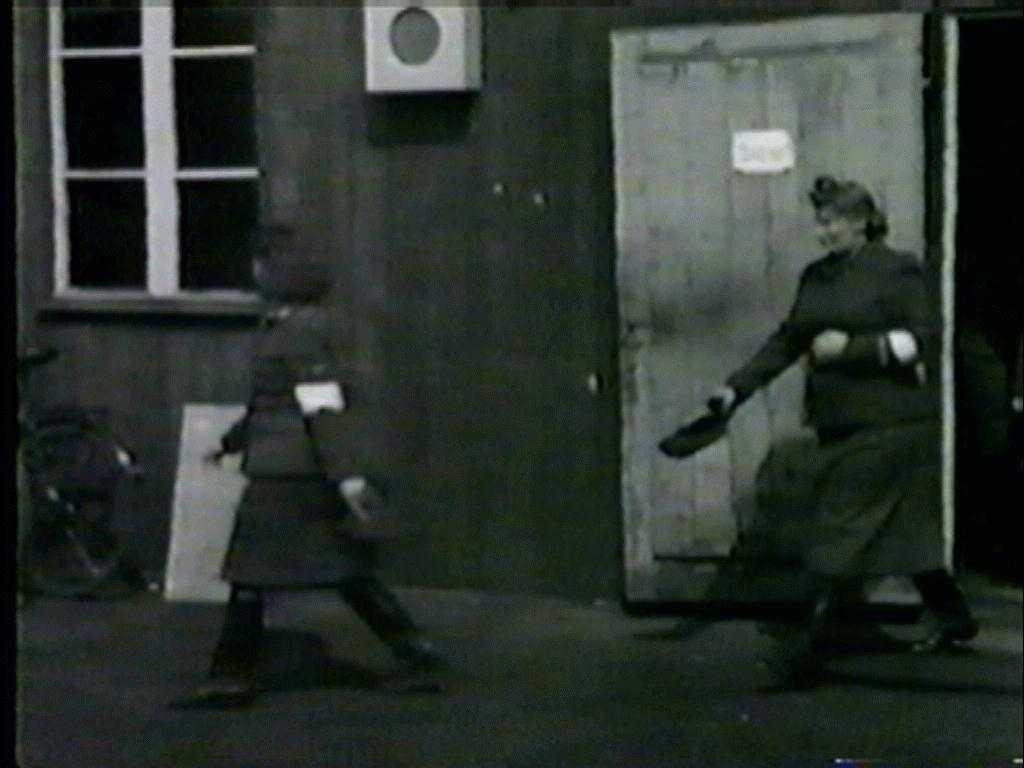 |
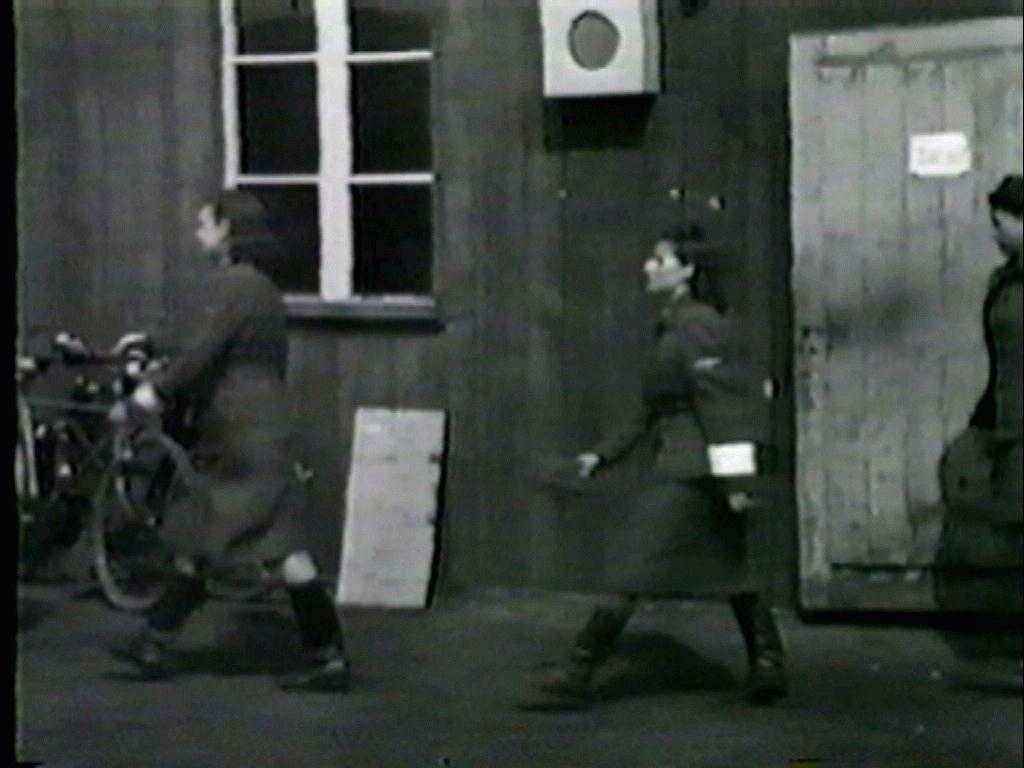 |
|
British Army photographs of SS women prisoners |
|
|
The following 13 images were sent to me by Tom Bauwens, in Belgium, whose father was there at the liberation, who writes
I have always been very interested or in a way fascinated in the history of Bergen Belsen. When I
was younger, my father has told me his story. My father died 10 years ago.
In 1945, Marcel BAUWENS was a young Belgian medical doctor, who studied at
the University of Ghent. After the war the British Army were looking for
recruits to assist them in their mission to the liberation of Bergen
Belsen. My father, Marcel Bauwens, was the first volunteer in line of a
larger group to be engaged. They went to Bergen Belsen to help the
surviving victims. Many years ago he told me that the unimaginable sight
of the many, many deaths he found at his arrival at the camp and the smell
in the camp has been in his mind all his life. My father did not like to
talk much about this. My mother says it has touched him deeply. This must
have been the basics of his deep social engagement he always had towards
other people. This story comes to my mind because I have found some old
pictures that have been taken when he was there in 1945. I have pictures
of him in this group, near his tent, views of the camp, a picture of him
and his mates near a large board that says: |
|
 |
 |
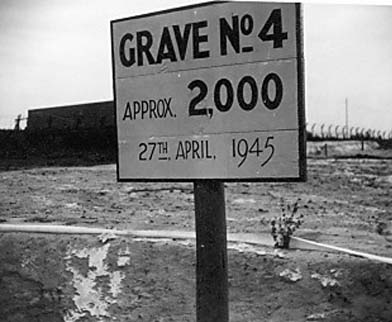 |
 |
 |
 Gallows? |
 |
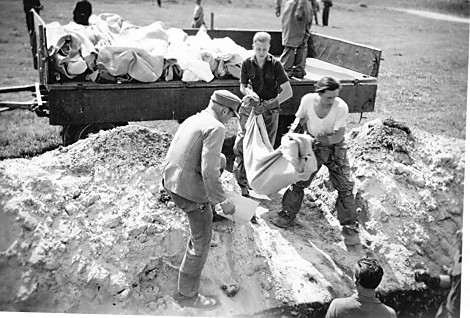 |
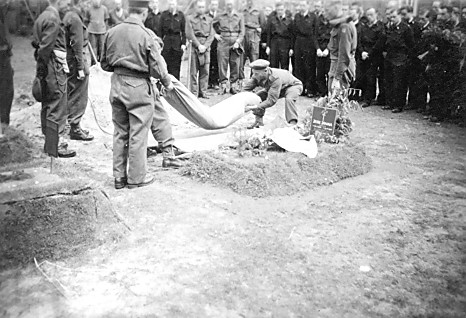 |
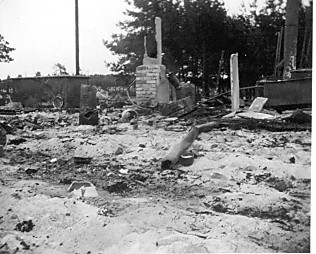 |
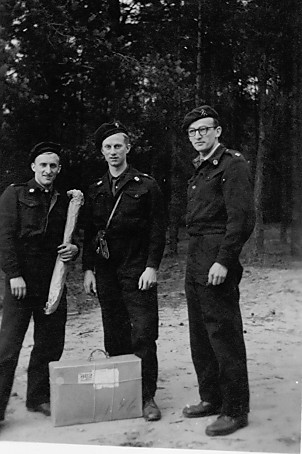 |
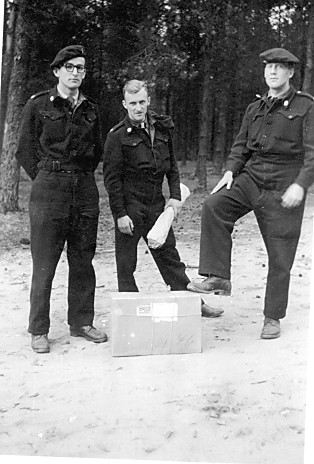 |
 |
My gratitude to Tom Bauwens for these images |
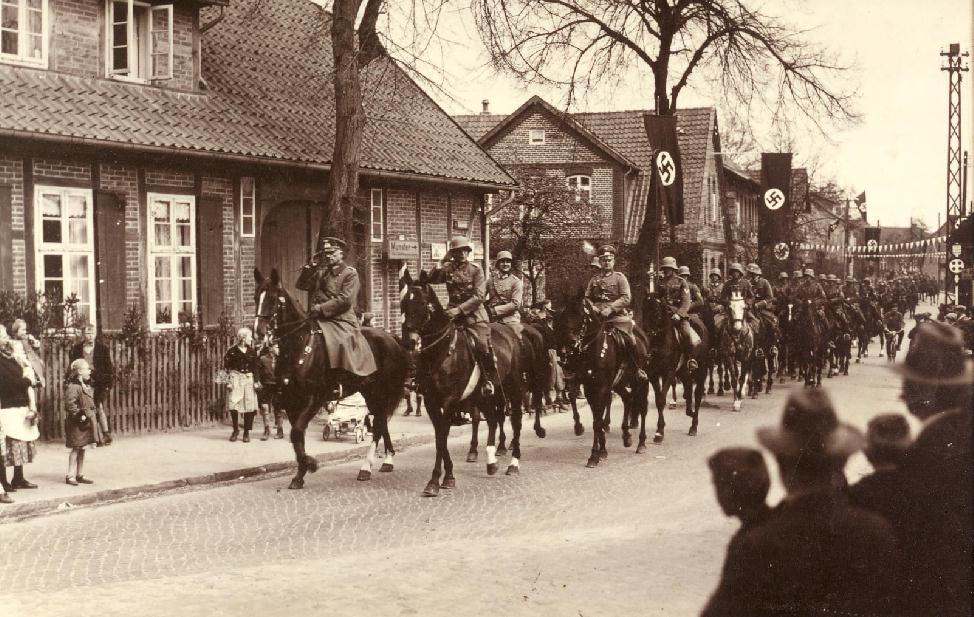
Wehrmacht 1936 Marching Through
Belsen - Image: Graham Parmenter
|
|
|
|
|
|
|
|
|
|
I found some of the above images on the Simon Wiesenthal Centre Site in California. Sorry the quality is not too good. I have included Dachau images to prove a point and to allow readers to visualise it as Belsen, where it was not much different. http://www.stephen-stratford.co.uk/belsen_trial.htm The following is extracted from this url: Any links highlighted below refer back to author's site. This section is concerned with Belsen Concentration Camp, its liberation by British Army Troops, the scenes that they found when they entered the camp and the subsequent trial of Belsen's Kommandant and former guards. When Belsen was liberated in April 1945, the impact in the UK was huge. While there had been information about concentration camps for some years, the impact on the British troops who had fought their way into Northern Germany through France, Belgium and the Netherlands, is hard to express in words. The scenes that the liberating troops found is all the more shocking, as Belsen was not an extermination camp and did not have any gas chambers. (Image above is supposedly of a gas chamber at Belsen). I also received an email from America in which a lady, whose mum was a GI bride, tells me that her father, an American GI, was also present, along with his unit, at the liberation of Belsen: "there were American troops there, if for no other reason than Eisenhower wanted to make sure that American troops could bear witness to what had happened there. My dad said he does not know if that was the reason his outfit was sent there, but he said that was not unusual because most of the time you just went where you were told to go and you weren't always told the reason why. My father never talked about these things years ago, and to be honest although I have always had an interest in history, I did not know to ask him about such things, specifically. It was not until the 50th anniversary of D-Day that he ever told us he was on Omaha Beach on D-Day. It was not until a few years ago he told us about Bergen-Belsen. He hates to talk about these things, he just about can't bear it, and from what he describes of Bergen-Belsen I can't say I blame him. I don't know how you would ever get those images out of your head, so why would you want to be reminded of it? I have to go to him and ask him specific questions, and then he will talk. But he doesn't just talk about it by himself. But he is 82-years-old now, and I so want to record his experiences because I feel they hold great historical value (even if it is only for our own family history). One of the most poignant things he told me about the camp was that the prisoners would fall on the ground (those who had the strength to walk, some were unable to stand and would just kind of reach out for them) and they would kiss their feet. My dad said he just couldn't stand it, they were so grateful to them and so glad to see them. He said it just made him feel so inadequate, so undeserving because he couldn't help but think of how many might have been saved if they'd gotten there a year before or even a month before." |
|
 Klein - The Camp Doctor |
|
|
The Belsen trial,
which lasted from Monday 17 September 1945 until Saturday 17 November 1945, was
one of the most famous war crimes trials mounted by the UK. Bergen-Belsen
Concentration Camp, located about 10 miles (16 km) north-west of Celle, was the
only concentration camp liberated by British soldiers. Consequently, the trial
that followed occupies an important part in the history of British War Crimes
trials. Belsen, like the other concentration camps was established to hold
what were considered, by the Nazi regime, as undesirable people, ranging from
Jews to relatives of famous German citizens who had fled overseas. Notable
inmate of Belsen include the Dutch Jewish girl
Anne Frank. Belsen was not an extermination camp (whose sole purpose was
the mechanical process of killing thousands of people at a time, and utilising
their by-products). Originally, it had contained a comparatively small number of
"exchange Jews"; Jews that had been allowed to leave Germany for reasons of
state or profit. At that time it had been relatively well managed. Towards the
end of 1944 it was designated a sick camp, and it was only then and in 1945 that
the numbers increased and that the appalling conditions developed. The
conditions discovered at the time of the camp's liberation may not have been the
result of a calculated plan on the part of either of those in command of the
camp or of those in authority, except in so far as it was a part of their policy
to disregard, and to do nothing to alleviate, the suffering of their prisoners.
The essential difference between the conditions at Belsen and Auschwitz is that
the conditions at Belsen were due to a criminal and inexcusable neglect coupled
with an administrative breakdown. The conditions at Auschwitz were the direct
results of a carefully designed and executed policy of long standing. The world
renowned British radio journalist Richard Dimbleby made a radio broadcast from
Belsen not long after its liberation. It describes in simple and unemotional
language the conditions found by British troops in the camp. In this paragraph I had mentioned that the sister of Marlene Dietrich, Elisabeth, was an inmate, but an email received in May 2013 tells me that she was there, but not as an inmate, but ran a cinema/cafe outside the camp for the troops. Thanks to Reger Bogaert of Belgium for the correct information. |
|
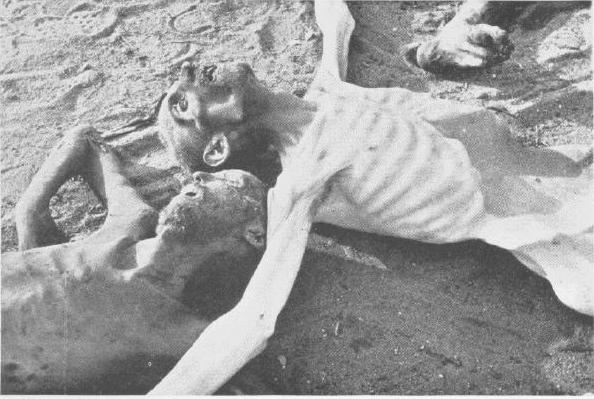 |
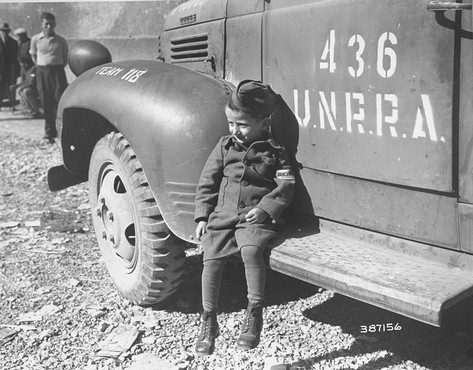 This little 5 year old (right) survived Buchenwald, don't tell me how? |
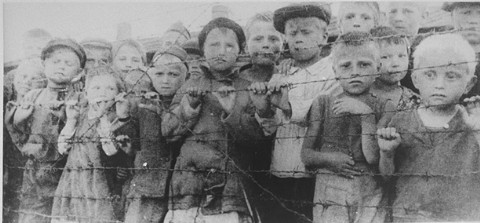 Hardened enemies of the Third Reich! Look at their faces - misery incarnate |
Due to the dreadful state of the survivors, and the outbreaks of typhus, 13,000 survivors died in the 6 weeks after the liberation by British troops. Due to the risk of even greater disease epidemics, the British troops were forced to use bulldozers to bury the hundreds of corpses; people who died and were just left were they fell. The captured guards, men and women, were forced to help bury the dead. All that now remains at the site of the Belsen camp are several mass graves. The camps infrastructure was burnt down, to prevent further disease epidemics. The London Agreement, and the Allied Control Council's Law Order 10, established the instruments for trying war criminals. However, British Military Law already permitted the trial of war criminals, through a Royal Warrant dated 14 June 1945. The main legal items at the trial were constituents of international law which applied at the time the offences were alleged to have taken place. This contrasts with the IMT and IMTFE, where the IMT's Charter together with international law, were the main legal instruments. |
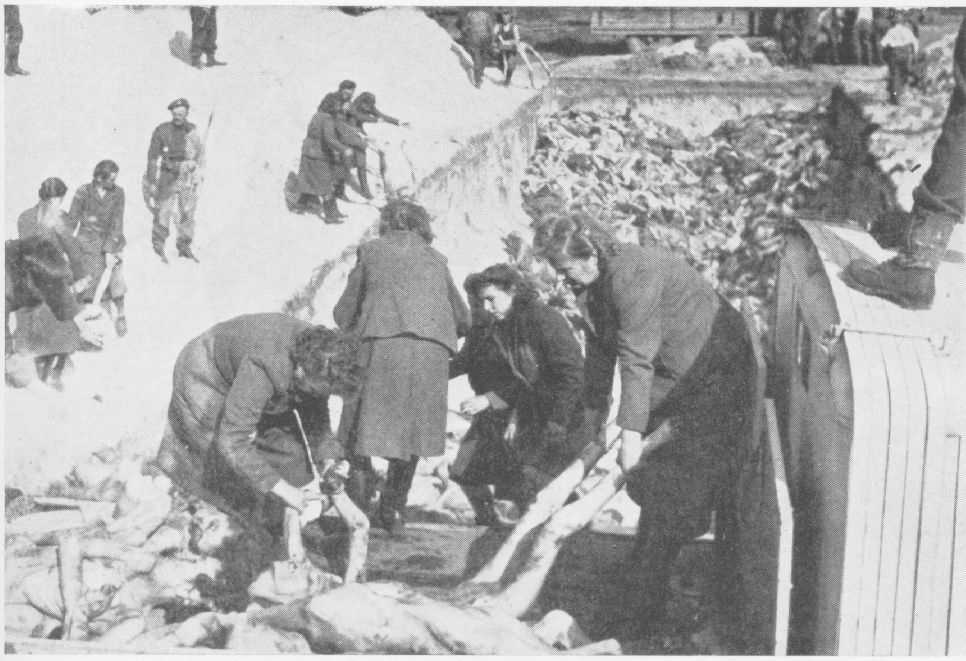 German SS Women filling the graves |
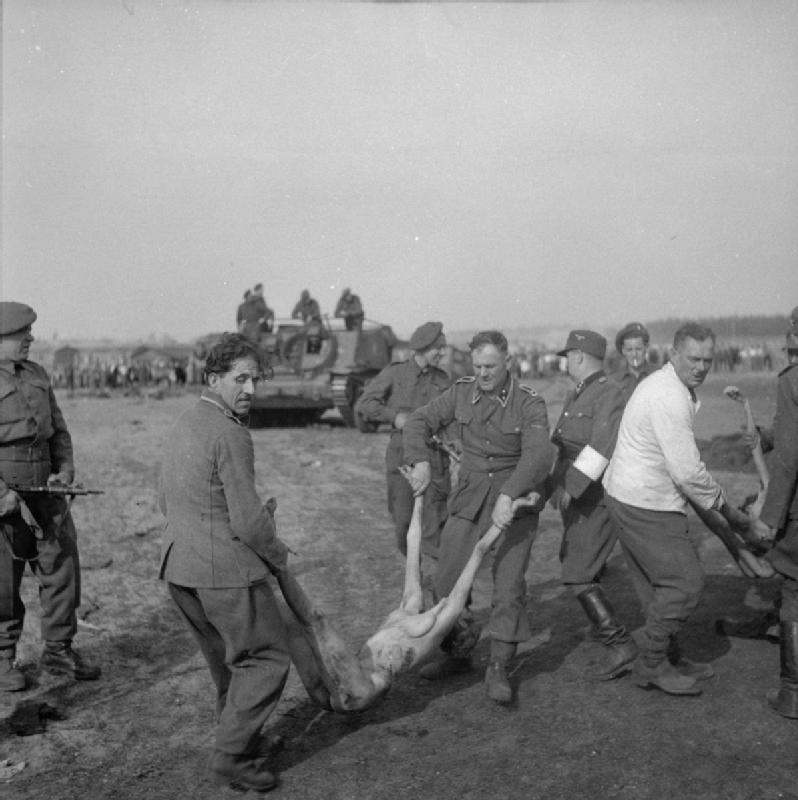 |
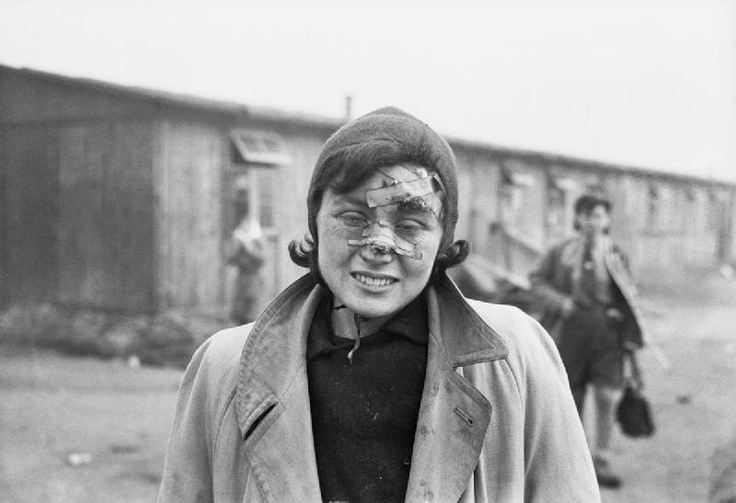 Face beaten by SS guards |
|
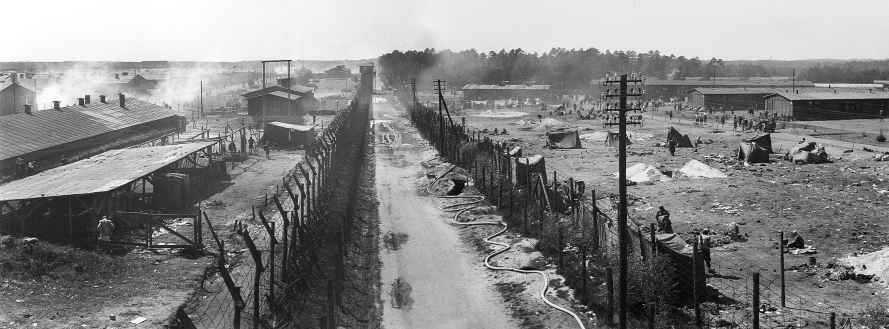 |
|
|
Although the trial was called by the papers "The Belsen Trial", there were two distinct charges which the accused faced. The first related to activities at Belsen, the second related to activities at Auschwitz. First Charge:At Bergen-Belsen, Germany, between 1 October 1942 and 30 April 1945, when members of the staff of Bergen-Belsen Concentration Camp responsible for the well-being of the persons interned there, in violation of the law and usages of war, were together concerned as parties to the ill-treatment of certain of such persons, causing the deaths of Keith Meyer (a British national), Anna Kis, Sara Kohn (both Hungarian nationals), Heinrich Glinovjechy and Maria Konatkevicz (both Polish nationals) and Marcel Freson de Montigny (a French national), Maurice Van Eijnsbergen (a Dutch national), Maurice Van Mevlenaar (a Belgian national), Jan Markowski and Georgej Ferenz (both Polish nationals), Salvatore Verdura (an Italian national) and Therese Klee (a British national of Honduras), Allied nationals, and other Allied nationals whose names are unknown, and physical suffering ot other persons interned there, Allied nationals, and particularly to Harold Osmund le Druillenec (a British national), Benec Zuchermann, a female internee named Korperova, a female internee named Hoffmann, Luba Rormann, Isa Frydmann (all Polish nationals) and Alexandra Siwdowa, a Russian national and other Allied nationals whose names are unknown. Second Charge:At Auschwitz, Poland, between 1 October 1942 and 30 April 1945, when members of the staff at Auschwitz Concentration Camp responsible for the well-being of the persons interned there, in violation of the law and usages of war, were together concerned as parties to the ill-treatment of certain of such persons, causing the deaths of Rachella Silberstein (a Polish national), Allied nationals, and other Allied nationals whose names are unknown, and physical suffering to other persons interned there, Allied nationals, and particularly to Eva Gryka and Hanka Rosenwayg (both Polish nationals) and other Allied nationals whose names are unknown. |
|
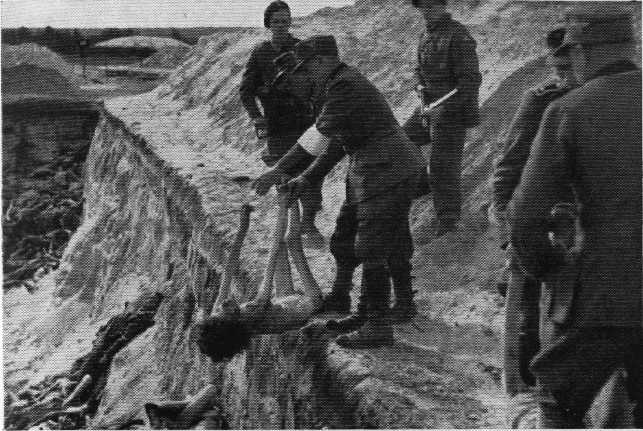 |
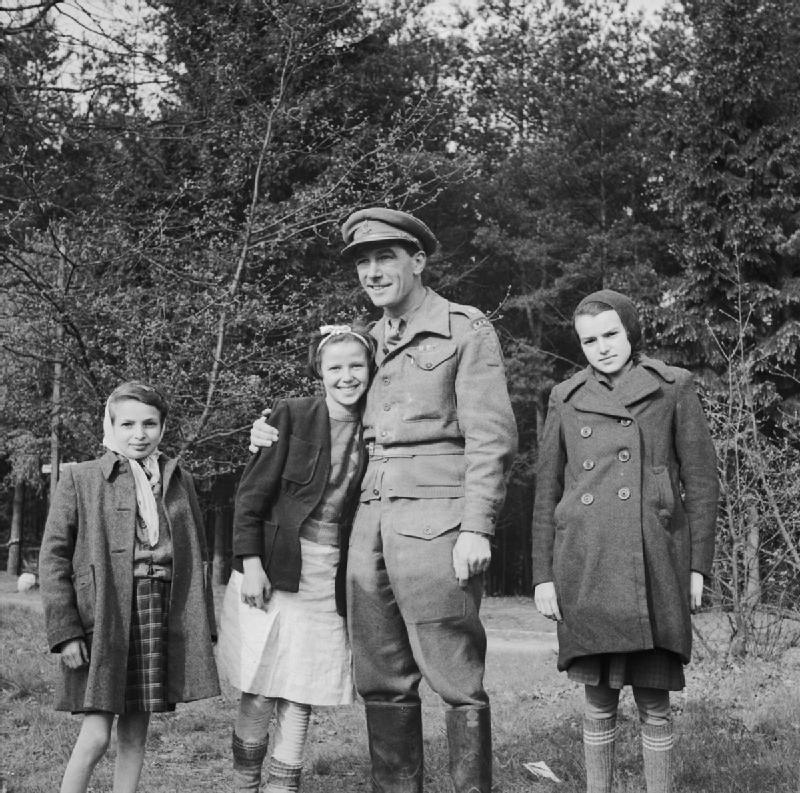 |
|
There were a total of 45 accused. Of these 45, 11 were charged with the second "Auschwitz" charge, as well as the Belsen charge. Only one defendant was only charged with the second charge. The defendants were represented by one Polish Officer and eleven British Officers, all of whom had held a legal qualification in civil life. It was the defendants' choice to be represented by British, rather than German, counsel. Click here to see a list of all the defendants, their charges and defending officer. On the tenth day of the trial, Thursday 27 September 1945, Colonel H.A. Smith was allowed to become an additional defending officer. Colonel Smith was a Professor of International Law at London University. He assisted the defence concerning points and interpretations of international law. There were in the dock 16 members of the SS. Of these, three held the most important positions: Kramer (Camp Commandant), Klein (Camp Doctor) and Hoessler (Compound Commandant & in charge of Camp No. 2). The other (Weingartner, Kraft, Klippel, Francioh, Egersdorf, Kulessa, Mathes, Soffel, Otto, Pichen, Dorr, Schreier and Barsch) were mostly conscripts, and held subordinate positions, such as being in charge of working parties, kitchens and ration stores. Only Kramer, Klein and Hoessler were officers; the others were mostly NCOs. There were also 16 female members of the SS. The most important were Grese (Compound Commander) and Volkenrath (as an Oberaufscherin, she alloted duties to the others). The others (Bormann, Ehlert, Ilse Forster, Ida Forster, Opitz, Klein, Bothe, Walter, Haschke, Fiest, Sauter, Lisiewitz, Hempel and Hahnel) were mostly employed upon duties of a minor administrative kind. They were mostly conscripts, having worked in factories and been appointed to supervise the slave labour allotted to their factory. The remaining 12 were prisoners themselves: 7 male and 5 female, who were alleged to have taken office as Kapos, and then to have ill-treated their fellow prisoners. Of these 12, 6 were Polish. Almost all the Kapos had served as ordinary prisoners for a considerable time before being "promoted" to Kapos. After all the evidence, witnesses and affidavits had been presented and closing speeches had been made, the court adjourned at 10.57am on the fifty-third day of the trial (Friday 16 November 1945). Last that afternoon, at 4.05pm, the court returned and announced it verdicts. The President of the court reminded everyone that findings of guilty were subject to the approval of superior military authority. Findings of not guilty were final, and cleared the accused of the particular charges that they faced. The 14 defendants who were found not guilty were removed by the court's Provost Marshal. On the fifty-fourth and final day of the trial, Saturday 17 November 1945, the court heard the pleas in mitigation of those people who had been found guilty. The speeches were made by their defending officers. After hearing these pleas, the court's President read its sentences. A total of 8 men, and 3 women, were sentenced to death by hanging. The other 19 guilty people were sentenced to varying terms of imprisonment. The eleven people sentenced to death appealed to the convening officer, which was Field-Marshal Montgomery. All the appeals for clemency were rejected. On 13 December 1945, at Hameln Jail, the 11 people sentenced to death were hanged by Albert Pierrepoint, assisted by Regimental Sergeant-Major O'Neill. The three women were hanged one at a time, in the order of Grese, Volkenrath and Bormann. The eight men were hanged in double executions, beginning with Josef Kramer and Fritz Klein. The executions took some time, as the rope had to be adjusted after each execution, as the British method of hanging involved a variable drop based on the prisoner's height, weight and age. The Imperial War Museum has now opened a permanent holocaust exhibition which includes some material about Belsen. |
|
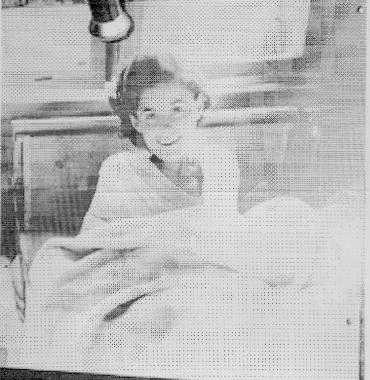 |
This young 15 year old girl's photo
was taken after being liberated and was in hospital. Unfortunately, her heart could not handle the happiness of freedom and she died a few days later |
|
An enlargement of the German Section |
 Daily Mail Wednesday May 2nd 1945 |
|
December 2006: Got This in am email from a Robert Parker My reason for this contact is to record that my late father, who spoke little of his war memories, was one of the first people to enter the camp. Maybe he was with Tom Bauwens father, but he related a story of being present with the Red Cross who were given access to the camp by the Germans, two or three days prior to the camp being liberated. The group consisted of approximately 10 persons, one of which was my father, he had volunteered to be present on a mission behind enemy lines under the flag of the Red Cross. No information was given as to there destination only that they were not allowed to wear any army insignia or carry weapons, additionally no cameras nor personal possessions were to be taken with them. He related to me that they waited for a number of days in a village nearby waiting for permission to enter the camp and watched a stream of German servicemen passing their abode away from the front line. I cannot add to the sights that met them when they finally entered the camp, which have not been adequately described by others. The only one thing that sticks in my memory is that my father said that it was the only time in his life that he knew "kindness would kill" and that no matter how much the residents in the camp begged for food even one square of chocolate could be fatal. I believe his initial role during that time was to separate the possible survivors from the probable's survivors and direct medical attention. My father was a simple soldier who served with the Royal Engineers, landing in Normandy with the allied forces, progressing through France, Belgium and Holland to northern Germany, fortunately, he returned home at the end of the war and led a normal life. May 2009, and this email from America. My name is Peggy Zeak Hench; my father Robert D. Zeak was a Medic WWII, he served in the European Campaign, He talked about being at the concentration camp Belsen (even though he hardly ever talked about it, in his later years he did) I have read only about British soldiers there until I seen the web page I guess you wrote. Can you tell me a little about the American soldiers being at Belsen? My father has passed away 3 years ago and I have been trying to look into his service in the Military, especially about his bronze star medal. I have been thinking maybe I misheard him until I read your webpage. My father told us how they warned them not to get out their food and feed the prisoners it could kill them. He also cried about an incident that haunted him about a barn they came across, I'm not sure where, and it was going to be burned by Germans, and when they opened the doors it was full of bodies stacked almost to the ceiling and some where moving. This haunted him and when he was old he did break down and talk about it. If you could let me know about the Americans at Belsen I would greatly appreciate it, or even if you can confirm they were there. Rachel Katz contacted me (May 2010) and asks the following question. I realise that it is almost impossible to find this gent or his family but ..... I teach a course on holocaust studies and while doing research I came across a website. I was wondering if you can help me. My mother is a holocaust survivor and I am researching the story of her family. There were 11 children. 10 survived. Of the ten, her 18 year old sister, 5 year old sister and 9 month old brother were sent to Bergen Belsen. At liberation her brother was 18 months old. He was almost dead. The 18 year old made such a ruckus that a kindly British doctor withdrew blood from himself and gave that transfusion to the child, his only chance at survival. He then built a tent and assigned a steady nurse to attend to the child. He was still very sickly when he left the camp two months later but he survived and is well and alive today. At the time of liberation, the 18 year old, herself just recovering from typhus, did not have the presence of mind to ask who this doctor is. Today my aunt is over 80 years old and is still pained that she has never known who this doctor was. Is there any way we can find out? There is only one such a story. He was by far the youngest child to have survived Bergen-Belsen. So if anyone knows of such a story this must be it. Could you direct me as to where to send my querie to? I would love to be able to locate this Angel in the form of a British doctor. If he is not alive, at least a relative. Please help me, Rachel katz You can contact rachel directly via 'thekallahregistry - at - gmail.com' remove -at- and insert @ for the correct email address Five images of Dachau (below) from Gijs, a Dutch friend. |
|
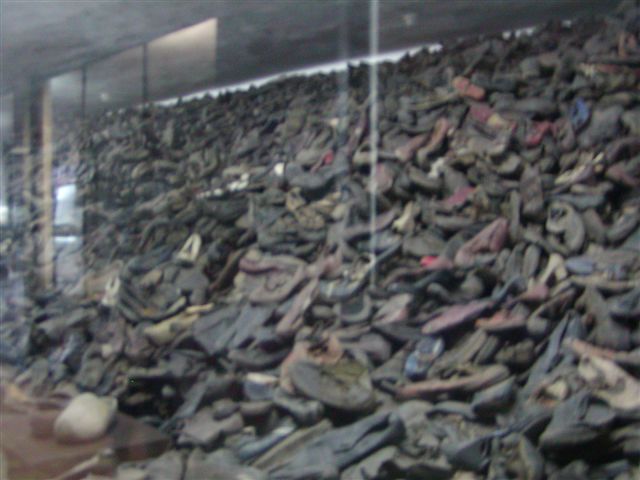 |
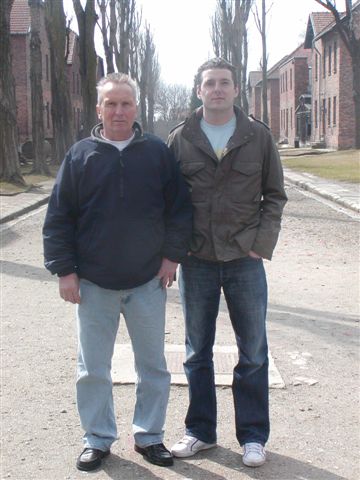 |
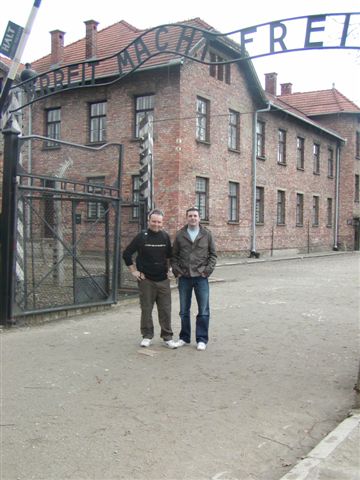 |
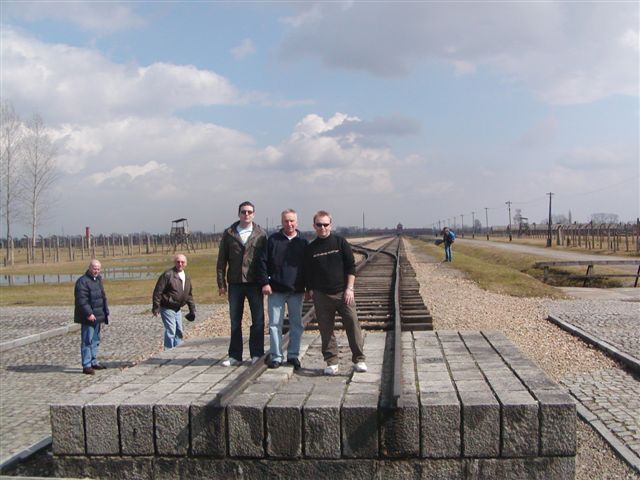 |
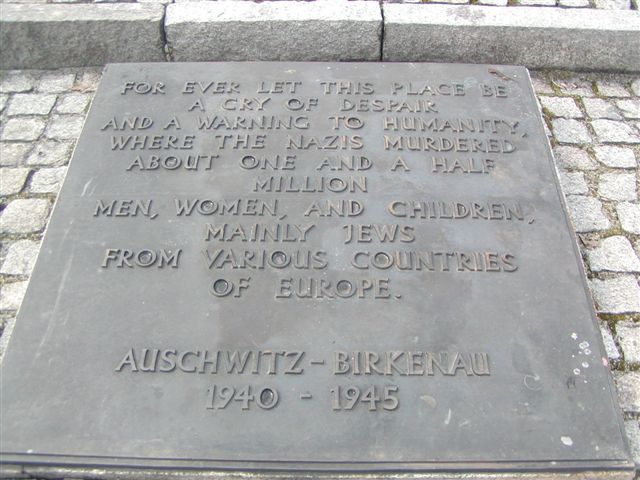 |
|
 |
Convicted and hanged at the age of 22, Irma Grese rewrote the definition of being horrible even by Nazi standards. She got the position in the Auschwitz due to her beefy outlook and ruthless attitude, but very few knew that she was a sexually twisted psychopath. Irma got sexual pleasures by torturing and beating people in all kinds of horrible manners. She would carry two hungry dogs with her at all time; she would beat people with her custom-made belt with pointy studs on. She quickly gained a reputation of a ruthless and evil person and her popularity grew with every passing day. She would slash women breasts with knives, and then see the painful surgery to satisfy her twisted sexual fantasies. By her acts she put many Nazis to shame, and was put to death when she was only 22 after committing a number of murders and torturing hundreds of prisoners. |
| http://www.dailymail.co.uk/news/article-3038505/Burning-huts-Hitler-flags-concentration-camp-victims-starved-death-Harrowing-pictures-Belsen-released-70-years-liberation.html#v-4172373618001 | < Video from The liberation of Belsen |
|
Anne Frank, whose diaries of persecution at the hands of the Nazis became the defining account of the Holocaust, was just one of Bergen-Belsen's many victims. Frank was living in the Netherlands when the Nazis seized it in 1940, leaving them trapped. In 1942 they were forced into hiding in secret rooms hidden inside Otto Frank's office building. They spent two years there, but were anonymously betrayed and sent to the concentration camps. Anne, and her sister Margot, were taken to Bergen-Belsen, where they died of typhus in February 1945, just months before the Allies liberated it. |
|
| A factual eye witness report written by a Medical Officer can be read here | |
http://www.stephen-stratford.co.uk/belsen_sentences.htm
http://members.aol.com/TeacherNet/Holocaust.html
http://nizkor.com/ftp.cgi/camps/bergen-belsen/ftp.py?camps/bergen-belsen/images/British_Liberation_Film - gruesome images from British cameras
http://www.nicole-caspari.de/annefrank/e_index.html - a bit flowery, but a tribute to Anne Frank
http://www.ou.org/yerushalayim/threeweeks/annefrank.html - I saw Anne Frank die
http://history1900s.about.com/library/holocaust/blpiccamp.htm - Camp Images
http://history1900s.about.com/library/holocaust/blchart.htm - Facts & Figures
http://history1900s.about.com/cs/frankanne/index.htm - Anne Frank
http://www.annefrankguide.net/en-gb/bronnenbank.asp?aid=10993